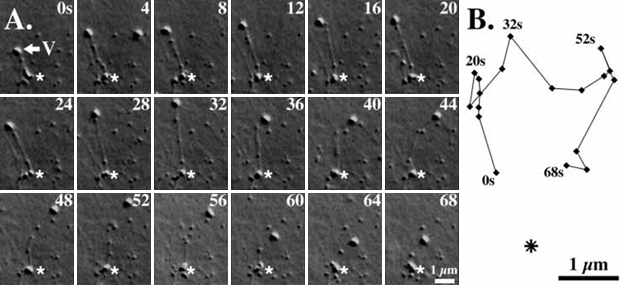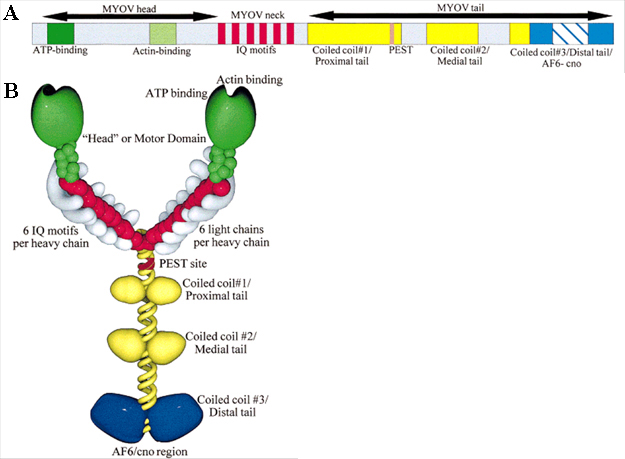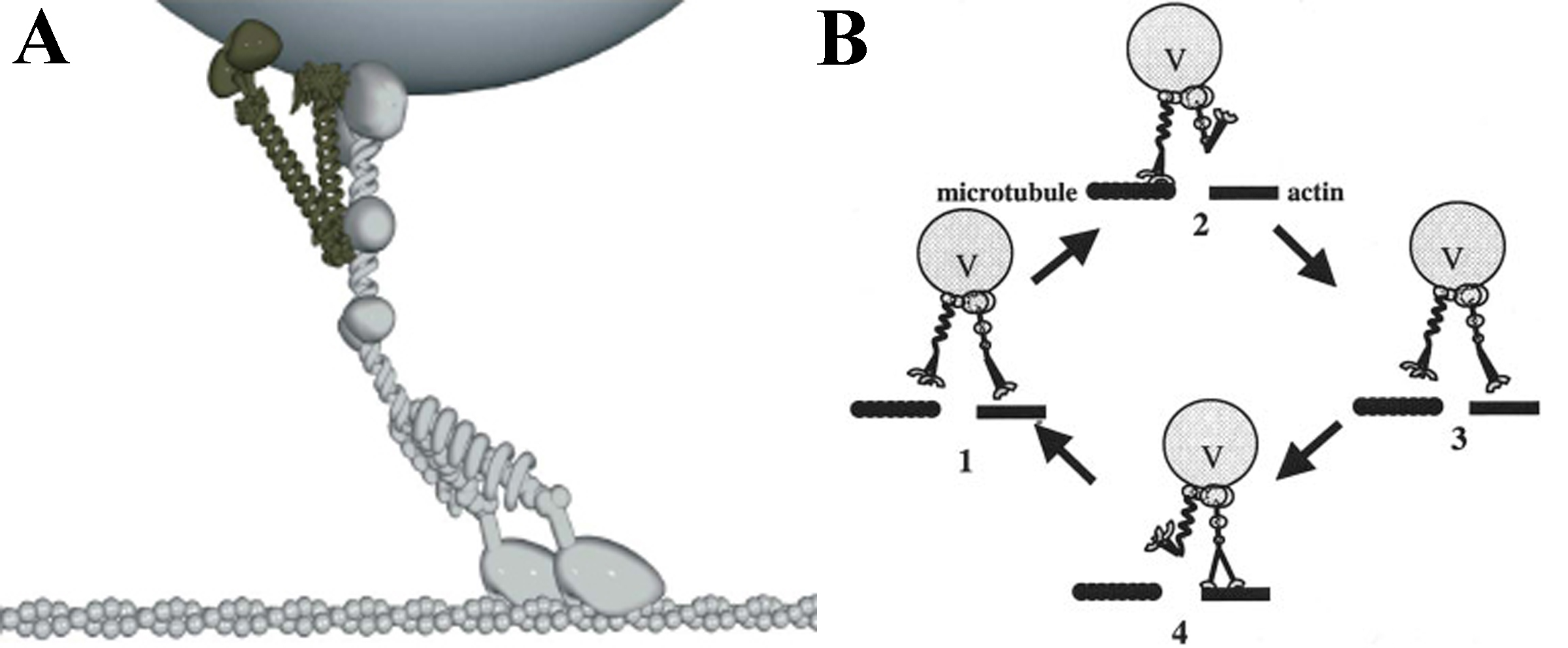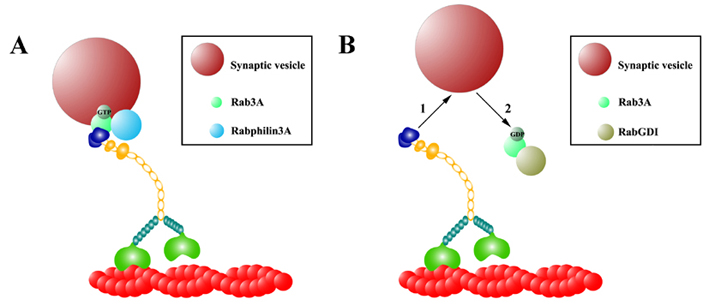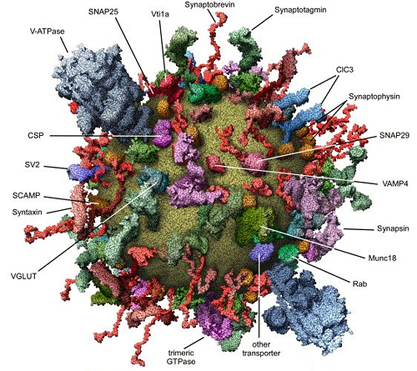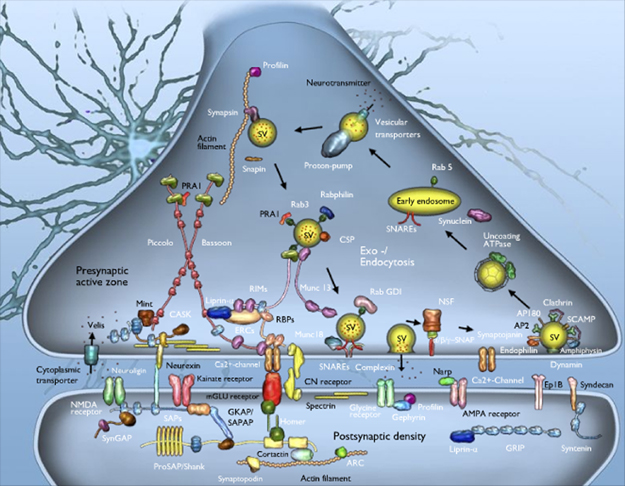Actin-based Vesicle Transport at the Synapse
My lab was the first to discover that vesicles in the giant axon of the squid move on both microtubules and actin filaments (Kuznetsov et al., 1992). These initial studies documented the ability of individual vesicles to move from microtubules to actin filaments and led to the development of the dual filament model of vesicle transport (Langford, 1995). The model proposes that long-range movement of vesicles occurs on microtubules and short-range movement on actin filaments. Short-range movement of ER vesicles at the synapse of neurons (Tabb et al., 1998) is required to locate these calcium-releasing organelles at sites of electrical excitation and serves to couple excitation and signal transduction. The calcium stimulated signaling cascades are postulated to initiate the cellular mechanisms that lead to learning and memory. We are currently investigating 1. the role of Rab3A in recruitment of myosin-V (Myo5a) to synaptic vesicles (SVs) and 2. the mechanism for the interaction of Myo5a with Rab3A (Wöllert et al., 2011).

